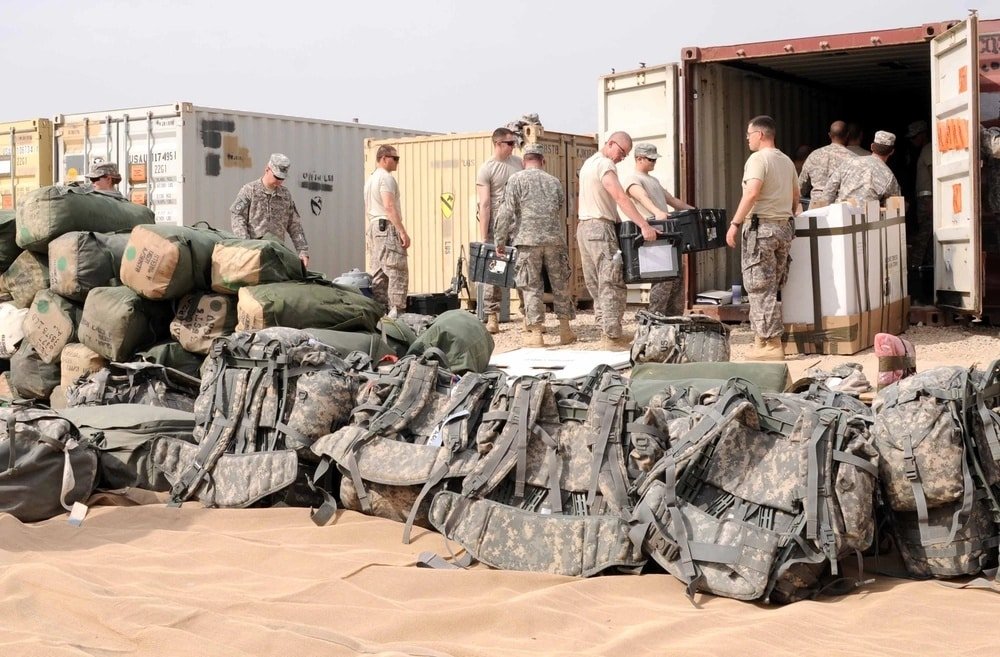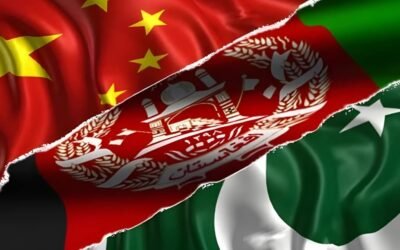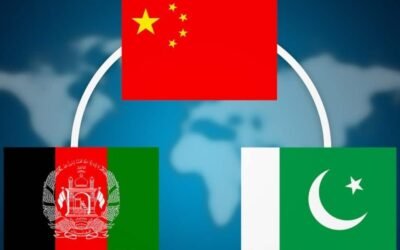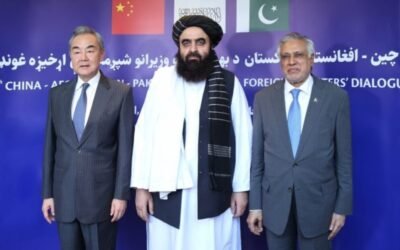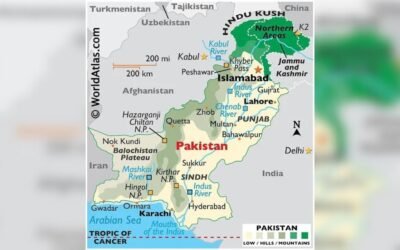The United States officially ended its military presence in Afghanistan in August 2021. This decision marked the end of a two-decade-long conflict, but it also triggered a chain of events that have had far-reaching consequences for the region. For Pakistan, the impact has been especially significant. The return of the Taliban to power, an ongoing humanitarian crisis, and increasing instability across Afghanistan have posed new challenges for Pakistan’s security, economy, and foreign relations.
🔊PR NO.2️⃣2️⃣0️⃣/2️⃣0️⃣2️⃣5️⃣
Deputy Prime Minister/Foreign Minister, Senator Mohammad Ishaq Dar @MIshaqDar50, Engages with Pakistani-American Community in New York.
🔗⬇️https://t.co/RBFb0gdk2B pic.twitter.com/xkHfjLWivd
— Ministry of Foreign Affairs – Pakistan (@ForeignOfficePk) July 27, 2025
The Regional Context
The global shift toward a multipolar world has already complicated foreign policy planning for many countries, including Pakistan. Traditional alliances are evolving, and major powers such as the United States, China, and Russia are vying for influence. For Pakistan, this means it must continuously reevaluate its diplomatic and security priorities. It cannot afford to align too closely with one side or lose strategic autonomy.
Situated between South Asia, Central Asia, and the Middle East, Pakistan is directly exposed to the effects of instability in Afghanistan. This geographic position presents both opportunities and risks. On one hand, Pakistan could become a key player in regional connectivity and economic development. On the other hand, it faces increased threats from cross-border militancy and economic spillovers.
Pakistan’s foreign policy is guided by wisdom, not impulse. In every regional crisis, from India’s aggression to Middle East flare-ups, Pakistan has stood for peace, dialogue, and responsible leadership.#Pakistan pic.twitter.com/oXP4ZYJFOk
— Fizza Urooj (@Fizz_Urooj) July 13, 2025
The situation in Afghanistan has deteriorated sharply since the U.S. withdrawal. Key issues are outlined below:
| Issue | Description |
| Taliban Consolidation | The Afghan government collapsed quickly. The Taliban took control in August 2021. |
| Humanitarian Crisis | Over 28 million people now need humanitarian aid. Food and medical shortages are widespread. |
| Human Rights Decline | Women and girls face severe restrictions. Many schools remain closed for girls above grade six. |
| Economic Breakdown | Aid cuts and frozen assets have paralyzed the financial system. The economy has contracted sharply. |
Afghanistan’s economy has nearly collapsed. International sanctions and the withdrawal of donor funding have crippled banking systems. Local businesses struggle to access credit, and unemployment rates remain high. At the same time, the absence of a recognized government has made it difficult for international organizations to engage fully with Kabul, limiting the scope of humanitarian assistance.
Impact on Pakistan
The instability in Afghanistan has placed Pakistan in a difficult position. The costs are growing in several key areas:
| Area | Impact on Pakistan |
| Security | Increased attacks from Tehrik-i-Taliban Pakistan (TTP). Border security under pressure. |
| Refugees | Pakistan already hosts 3 million Afghan refugees. New arrivals are expected. |
| Economy | Cross-border trade has slowed. Regional connectivity projects are at risk. |
| Relations with the U.S. | Washington questions Pakistan’s past ties with the Taliban. Cooperation has declined. |
| Terrorism | Militants in Afghanistan threaten internal security. Risk of attacks remains high. |
| Regional Instability | Unrest in Afghanistan affects Iran, Central Asia, and the wider region. |
Militant groups operating from Afghan territory have increased attacks inside Pakistan, particularly in Khyber Pakhtunkhwa and Balochistan. The TTP, which has safe havens in Afghanistan, has rejected Pakistani calls for peace and resumed violent operations. Islamabad has repeatedly urged the Afghan Taliban to take action against these groups, but results have been limited.
Pakistan has also stepped up border fencing and increased troop presence in sensitive areas. Still, with a porous and mountainous border, complete control remains difficult.
Refugee Pressures
Afghanistan’s worsening crisis is pushing more people to seek refuge in Pakistan. While Pakistan has a long history of hosting Afghan refugees, the economic strain and limited resources make additional inflows harder to manage. Services like education, health, and housing are already overstretched in refugee-hosting areas.
You May Like To Read: Pakistani Jails and Afghan Nationals: A Look into Cross-Border Criminal Cases
Islamabad has requested the international community’s support in managing this burden. However, donor fatigue and limited humanitarian access in Afghanistan have slowed the response.
Trade between Pakistan and Afghanistan has declined sharply. The World Bank reported
that Afghan imports from Pakistan fell by more than 40 percent in 2022 compared to the previous year. Projects under the China-Pakistan Economic Corridor that depend on stable conditions in the region have faced delays.
Regional connectivity projects, such as the TAPI (Turkmenistan-Afghanistan-Pakistan-India pipeline) and CASA-1000 (Central Asia-South Asia power project), are either stalled or progressing very slowly. These were seen as key to energy security and trade growth.
Diplomatic Relations with the U.S.
The U.S.-Pakistan relationship has undergone significant changes since the withdrawal. The Biden administration had limited its engagement with Islamabad, focusing instead on India and Southeast Asia. While military-to-military contacts continue, political ties have cooled.
U.S. officials have raised concerns about Pakistan’s role in Afghanistan and its influence over the Taliban. Pakistan has pushed back, saying it has been made a scapegoat for policy failures in Washington. This mutual mistrust has affected cooperation on security, economic recovery, and regional diplomacy.
The withdrawal from Afghanistan has offered lessons for both the United States and regional countries like Pakistan.
| Lesson | Relevance |
| Strategic Patience | Long-term missions need sustained engagement beyond military success. |
| Unintended Consequences | Quick withdrawals can destabilize entire regions. |
| Comprehensive Planning | Military decisions should incorporate both political and humanitarian considerations. |
| Regional Spillover | Conflict in one country often affects neighboring states. |
| Counterterrorism Complexity | Force alone is not enough. Intelligence, diplomacy, and development are also needed. |
Pakistan must now rethink its security policies and prioritize internal stability. A counterterrorism strategy should encompass not only military operations but also deradicalization programs, educational reform, and economic development in border areas.
Pakistan’s role in managing post-withdrawal instability is central, but it cannot handle the situation alone. A regional approach is needed. Countries such as China, Iran, and Russia also have a stake in Afghan stability. Multilateral platforms, such as the Shanghai Cooperation Organization, offer an opportunity to build consensus.
You May Like To Read: Role of Pakistan’s Frontier Corps in Combating Militancy and Smuggling in FATA
Islamabad also needs to maintain communication with both Washington and Beijing. Each power brings different tools to the table. The United States remains a critical source of economic and military aid. China plays a growing role in infrastructure and investment. A balanced foreign policy is essential.
The Afghan crisis is not over. For Pakistan, managing the consequences will require a steady hand, smart diplomacy, and coordinated regional engagement. The country must secure its borders, assist refugees where possible, and promote long-term stability in the region. Without sustained effort, the ripple effects of the withdrawal will continue to shape Pakistan’s future for years to come.

